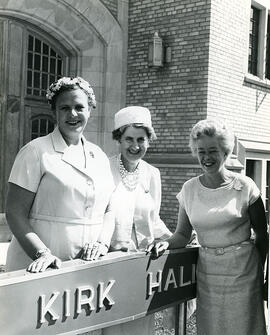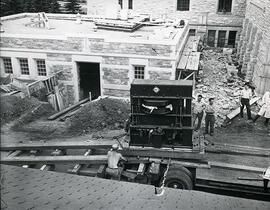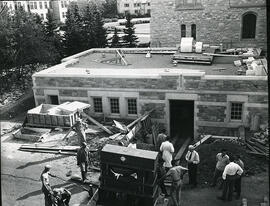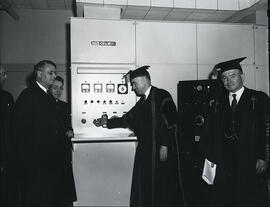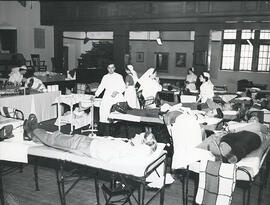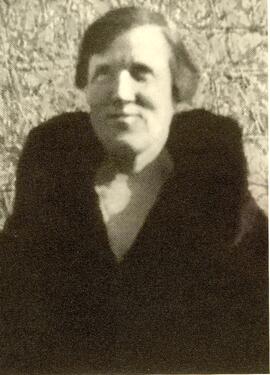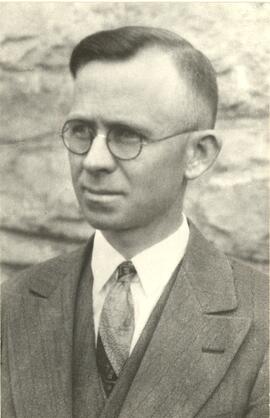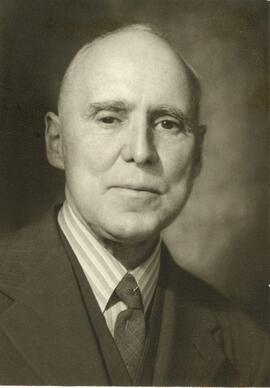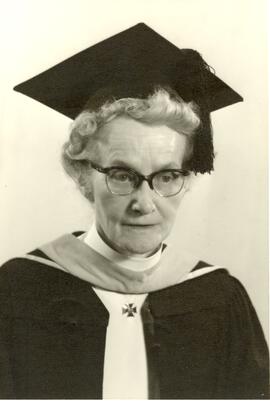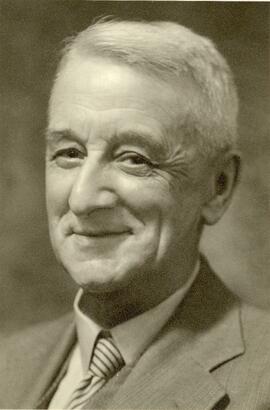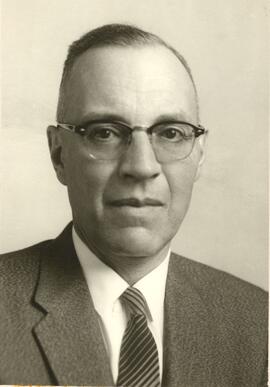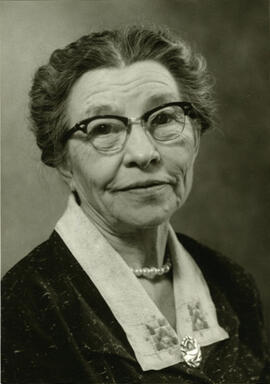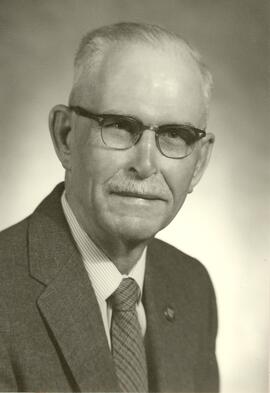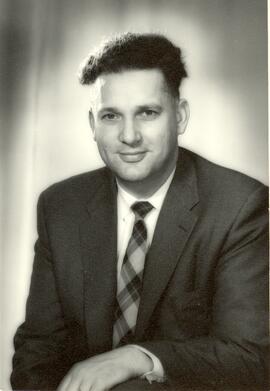Mrs. Van Beckloff, Mrs. Frank Former, Margaret Pattillo
- A-3561
- Pièce
- 1963
Fait partie de University of Saskatchewan Photograph Collection
Mrs. Van Beckloff, Mrs. Frank Former, Margaret Pattillo standing in front of Kirk Hall.
Bio/Historical Note: Margaret H. Pattillo was born in Truro, Nova Scotia, on 27 June 1916. She received her teacher's certificate from the Nova Scotia Normal School, then enrolled in Acadia University, obtaining her B.Sc. (Home Economics) in 1938. Following her service with the RCAF Women's Division during World War II, Pattillo joined the University of Saskatchewan (1946) as Instructor in the Department of Women's Work. She earned her MSc. H.Ec. from Michigan State University in 1951 and was promoted to Assistant Professor (1951) and Associate Professor (1957). She held various positions, including serving as Executive Director of Saskatchewan Association of Homemakers' Clubs/Women's Institutes. In 1979 the Canadian Society of Extension presented Pattillo with an Honourary Life Membership in the Society for her distinguished service to Extension Education, and she was inducted into the Saskatchewan Agricultural Hall of Fame on 12 August 1990. Pattillo retired from the University in 1981, and died on 12 October 1990 at the age of 74. She is buried in Robie Cemetery in Truro, Nova Scotia.

